Film
THIS LISTING WILL GROW WEEK BY WEEK.
NOTE: Because most of the artists on this site were at the height of their careers in the 1930s and 1940s, those are the decades I cover first, followed by subsequent decades. The silent era is covered at the end. Most of the films made before 1930 – and some made after – are now lost, so part of this list is academic. Hundreds of other films featuring Music Hall artists were made before 1930; on this page I have restricted myself to those with well-known ‘names’, or those depicting speciality acts such as jugglers or acrobats.
1930s
SAY IT WITH FLOWERS (1934. Dir: John Baxter). A much-loved old Cockney couple of flower-sellers (played by Mary Clare and Ben Field) fall on hard times and friends and customers stage a benefit concert. Among the Music Hall performers who rally round to appear at the concert are Florrie Forde, Tom Costello, Charles Coburn, Percy Honri and Marie Kendall (hilarious singing Did Your First Wife Ever Do That?). Edgar Driver impersonates Little Tich. All the old stars are on top form, and this sentimental film is a pure joy.
THOSE WERE THE DAYS (1934. Dir: Thomas Bentley). Set in 1890 and based on Pinero’s play The Magistrate, this stars Will Hay as a stern legal figure (but with a secret passion for Music Hall entertainment) and a very young John Mills as his fun-loving son. The story rattles along in farcical fashion (plenty of mistaken identity routines and similar misunderstandings) and the main attraction is the presence of two great stars – Lily Morris and Harry Bedford, the latter singing A Little Bit Off the Top.
MUSIC HALL (1934. Dir: John Baxter). Thin plot involves a tatty Music Hall being invigorated by the introduction of modern methods. George Carney stars and acts include Macari’s Dutch Serenaders, Chester’s Performing Dogs and G.H.Elliott (you can see the clip of him on the Thanks for the Memory Page).
ALF’S BUTTON AFLOAT (1938. Dir: Marcel Varnel). The Crazy Gang in second movie version of the W.A. Darlington stage fantasy about a group of men who find an old lamp, rub it, and summon a genie (here played by Alastair Sim). Pretty funny still.
ALMOST A GENTLEMAN (1938. Dir: Oswald Mitchell). Mistaken identity vehicle for Billy Bennett, who plays a nightwatchman thought by conmen to be a rich businessman. Bennett had a hand in the screenplay, too.
ALMOST A HONEYMOON (1938. Dir: Norman Lee). Variety (and later radio and TV) star comedian Tommy Trinder plays a man who has to find a bride in 24 hours in order to fulfill the terms of a job he has been offered. Trinder went on to make much better films than this.
AROUND THE TOWN (1938. Dir: Herbert Smith). Vic Oliver stars in this revue-style comedy as an agent helping a rich American find a new British songwriter. Acts include real songwriter Jimmy Kennedy, The Rhythm Sisters, The Three Hillbillies, Terry’s Juveniles and The Two Charladies.
ASK A POLICEMAN (1939. Dir: Marcel Varnell). Dodgy policeman Will Hay, aided by his usual cohorts Moore Marriott and Graham Moffatt, try to manufacture a crime wave in their peaceful little village when they are told they might be made redundant. Fine Hay vehicle with toothless codger Marriott, already ancient, at one point playing his own father.
AUNT SALLY (1933. Dir: Tim Whelan). Ebullient comedian Cicely Courtneidge as a cabaret artist looking for work.
BAND WAGGON (1939. Dir: Marcel Varnel). Movie version of the wartime hit radio show with Arthur Askey and Richard Murdoch. Pat Kirkwood and Jack Hylton and His Band are in there, too, plus a brilliant comedy/musical/dancing routine by Forsythe, Seamon and Farrell.
BIRDS OF A FEATHER (1935. Dir: John Baxter). Upward-mobility comedy stars George Robey as a sausage-manufacturer who rents a castle from a penniless aristocrat (Horace Hodges).
THE BLACK HAND GANG (1930. Dir: Monty Banks). ‘Wee’ Georgie Wood, accompanied by ‘mother’ Dolly Harmer, puts an extended version of his famous Music Hall sketch on film. Director Banks was married to Gracie Fields.
BLARNEY (1938. Dir: Harry O’Donovan). Irish comedian Jimmy O’Dea (who wrote the screenplay with long-time collaborator O’Donovan) plays an itinerant salesman who picks up a case of jewels in mistake for the cough medicine he is trying to flog. Crooks, it need not be said, are swiftly in pursuit of him.
BOOTS! BOOTS! (1934. Dir: Bert Tracy). In George Formby’s first movie (barring a couple of silent appearances when he was a child) he plays a hotel boot-cleaner who falls for a maid, played by his real-life wife Beryl. Made by Blakely’s Productions, which became Mancunian Films.
BOYS WILL BE BOYS (1935. Dir: William Beaudine). One of Will Hay’s finest as the devious and unscrupulous Dr Alec Smart, who assumes the headmastership of Narkover College with forged credentials. Enshrines some of Hay’s celebrated Variety act, The Fourth Form at St Michael’s.
Here’s the famous ‘How High is a Chinaman’ sketch from Boys Will be Boys. If it gives you the taste, you can find the entire movie on YouTube.
BOYS WILL BE GIRLS (1937. Dir: Gilbert Pratt). Vehicle for character comedian Leslie Fuller, playing a hard-drinking womanizer who has to lead a sober life in order to gain an inheritance. He shares lead billing with the great Nellie Wallace.
CALLING ALL CROOKS (1938. Dir: John Black). Mancunian Films favourite Dougie Wakefield plays a dozy detective in this Northern comedy. Includes some Variety acts: The 30 gypsy Revellers, The Sherman Fisher Girls and The Seven Royal Hindustanis.
CALLING ALL STARS (1937. Dir: Redd Davis) Inconsequentially-plotted revue tale contains many fine acts, some American but mostly British, doing their thing: Max Bacon, Flotsam and Jetsam, Revnell and West, Larry Adler, Billy Bennett, Billy Costello (the voice of Popeye the Sailor), the wonderful Nicholas Brothers, Buck and Bubbles, The 12 Aristocrats (wonder if that’s where the famous joke came from?), Whirlwind Skaters and the Three Canadian Bachelors (!).
CALLING THE TUNE (1936. Dir: Reginald Denham). Melodramatic musical about the recording industry, with Clifford Evans seeking revenge on the mogul who stole his father’s revolutionary idea. Guest stars include George Robey and Charles Penrose (The Laughing Policeman).
CAN YOU HEAR ME MOTHER? (1935. Dir: Leslie Pearce). Sandy Powell gives up his job as a Yorkshire millworker and travels to London to seek his fortune as a comedian. On the train he finds an adandoned baby, which he is obliged to care for. Good vehicle for the likeable comic.
CHU CHIN CHOW (1934. Dir: Walter Forde). Film version of the famous musical stars Hollywood’s Anna May Wong and George Robey repeating his stage success.
COCK O’ THE NORTH (1935. Dir: Oswald Mitchell). Railwaymen stage a concert for a colleague (George Carney) forced to take early retirement after a crash. Variety acts on display include: Horace Kenney, Hutch, Naughton and Gold, Omar and Stanley Kirkby.
COME ON GEORGE (1939. Dir: Anthony Kimmins). George Formby, himself a former jockey, plays a hapless ice-cream vendor obliged to ride a dangerous horse in a big race. Plenty of good songs in this excellent vehicle, one of Formby’s best.
COMMAND PERFORMANCE (1937. Dir: Sinclair Hill). Variety balladeer Arthur Tracy, always billed as The Street Singer, falls in love with a gypsy girl and sings at the hospital bedside of her little sister, injured in an accident. Described in one reference book as ‘absurdly sentimental.’
CONVICT 99 (1938. Dir: Marcel Varnel). Will Hay as a fraudulent prison governor, helped and hindered by Moore Marriott and Graham Moffatt as usual.
COTTON QUEEN (1937. Dir: Bernard Vorhaus). Stanley Holloway and top Variety comedian Will Fyffe play rival businessmen obliged to merge to bring off a big contract.
DANCE BAND (1935. Dir: Marcel Varnel). American star Charles ‘Buddy’ Rogers (husband of Mary Pickford) came to Britain to make this musical that involves an all-girl band. Richard (Mr Pastry) Hearne and Albert Whelan are in the supporting cast.
THE DEPUTY DRUMMER (1935. Dir: Henry W. George). Lupino Lane musical that failed to win good reviews at the time.
DISCOVERIES (1939. Dir: Redd Davis). Talent-spotter Carroll Levis (who went on to precede Hughie Green as a TV talent-show host) and a host of acts known and unknown: Issy Bonn, Afrique, Doris Hare, The Three Ginx, Dump and Tony, George Meaton and The Radio Rascals.
DODGING THE DOLE (1936. Dir: John E. Blakely). The title says it all in this Northen comedy featuring Roy Barbour, Jenny Howard, Dan Young, Hatton and Manners, The Barry Twins, The Two Jays, Steffani’s Silver Songsters and the Blackpool Tower Band.
DON’T GET ME WRONG (1937. Dirs: Arthur Woods and Reginald Purdell). Max Miller stars as a fairground barker who tries to interest a millionaire in a petrol substitute.
DON’T RUSH ME (1935. Dir: Norman Lee). Great title, given his leisurely style, for Robb Wilton, who plays an anti-gambling supporter with a secret passion for the dog-track.
Dr JOSSER KC (1931. Dir: Norman Lee). Farce about stolen handbags based on a Variety sketch written by the star, Ernie Lotinga (who was married to Hetty King).
EDUCATED EVANS (1936. Dir: William Beaudine). Max Miller’s biggest hit (and it must be remembered that Variety’s Cheeky Chappie was quite a considerable film star back in the day) has him as a racing tipster trying to break into high society. Very fast, very funny. I saw it once, on television years ago, and it seems since to have become ‘lost.’ Pity.
ELSTREE CALLING (1930. Dirs: Adrian Brunel, Alfred Hitchcock, Andre Charlot, Paul Murray, Jack Hulbert). Revue-style entertainment with several good acts, including Lily Morris’s classic routine Why Am I Always the Bridesmaid? Other performers include Tommy Handley, Will Fyffe, Cicely Courtneidge, Bobby Comber, The Three Eddies and Teddy Brown. Except for Morris and Fyffe, this is fairly dull. Hitchcock’s contribution was directing a sketch with hangdog-faced Cockney comedy actor Gordon Harker.
EVERYTHING HAPPENS TO ME (1938. Dir: Roy William Neill). Max Miller stars as an election agent trying to foil the political ambitions of a corrupt orphanage superintendent. Neill, born off the coast of Ireland on the ship where his father was captain, mostly worked in Hollywood, where he directed Universal horror films and most of the Basil Rathbone Sherlock Holmes series.
FATHER O’FLYNN (1935. Dirs: Wilfred Noy, Arthur Tennyson). Irish musical melodrama features some good variety acts, including Ethel Revnell and Gracie West (The Long and Short of It), The Sherman Fisher girls and comedy singer Stanley Kirkby.
FEATHER YOUR NEST (1937. Dir: William Beaudine). George Formby’s least-liked movie, described as ‘sluggish and overlong,’ though it is the one where he sings Leaning on a Lamppost. Polly Ward co-stars.
FINE FEATHERS (1937. Dir: Leslie Hiscott). Musical vehicle for Renee Houston (co-starring with husband Donald Stewart) as a Scottish shopgirl mixed up with crooks, who has to pose as the mistress of the Crown Prince of Boravia (?). Robb Wilton no doubt adds to the confusion.
A FIRE HAS BEEN ARRANGED (1935. Dir: Leslie Hiscott). Flanagan and Allen play crooks who, on their release from jail after 10 years, find that a housing estate has been built on the field where they buried the loot. Not the pair’s best vehicle.
FOLLOW YOUR STAR (1938. Dir: Sinclair Hull). Factory worker leaves his job to go on the stage as a singer, then becomes destitute when the show he’s in folds. Star Arthur Tracy, always billed as ‘The Street Singer,’ was a massive variety attraction.
THE FROZEN LIMITS (1939. Dir: Marcel Varnel). Fast-paced comedy with the Crazy Gang as a variety troupe who set off for Alaska when they read about the Gold Rush in the (40-year-old) newspaper their chips are wrapped in. Flanagan and Allen, Nervo and Knox and Naughton and Gold are joined by Moore Marriott as an ancient prospector.
GAY LOVE (1934. Dir: Leslie Hiscott). No, of course not. Variety performer Florence Desmond stars in an opulent-looking musical that gives full rein to her celebrated impersonations, including Mae West. Sophie Tucker’s in it, too.
GET OFF MY FOOT (1935. Dir: William Beaudine). Even though the title is Frank Randle’s catchphrase, this is in fact the first solo starring role for the breezy and appealing Max Miller, who plays a Smithfield meat porter who becomes first a butler, then a millionaire.
GOOD MORNING BOYS (1937. Dir: Marcel Varnel). Famous school farce starring Will Hay as fraudulent and bumbling headmaster Dr Twist, obliged to escort his unruly pupils to Paris. Very funny, with Lilli Palmer, Graham Moffatt, Charles Hawtrey and Will Hay Jr.
THE GOOD OLD DAYS (1939. Dir: Roy William Neill). Max Miller vehicle set – oddly for a comic so modern for his era – in 1840. He plays a travelling actor who wins a pie-eating contest and goes on to stage illegal shows at a tavern. Doesn’t really work, but an interesting swerve in Miller’s career.
HAPPY (1933. Dir: Fred Zellik) Based on a German musical comedy, this has Stanley Lupino as a songwriter who has a sideline inventing a device to protect vehicles from car thieves. Variety stars Harry Tate and Will Fyffe are in the supporting cast.
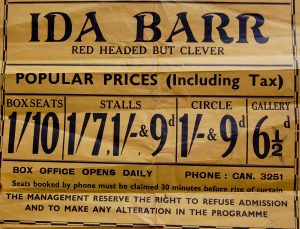
Ida Barr was in Happy Days Are Here Again
HAPPY DAYS ARE HERE AGAIN (1936. Dir: Norman Lee) Renee and Billie Houston, big stars of the day, play sisters who form a double-act after the retirement of their parents. Music Hall favourites Ida Barr and Marie Kendall are in it, too.
HEAT WAVE (1935. Dir: Maurice Elvey) Albert Burdon as a North Country greengrocer who becomes involved in a South American revolution. Musical comedy also stars singer Les Allen.
HERE’S GEORGE (1932. Dir: Redd Davis) Comedian George Clarke in fast-moving and well-received farce about a man who has a flat full of labour-saving devices. Which go wrong.
HEY! HEY! USA (1938. Dir: Marcel Varnel) Aboard a transatlantic liner, dodgy academic Dr Twist (Will Hay) is obliged to pose as a gangster. The plot involves two rival gangs trying to abduct a millionaire’s son, and Hay is supported by Laurel and Hardy favourite Edgar Kennedy. Untypical Hay vehicle (he’s usually seen in less opulent settings) but no less funny for that.
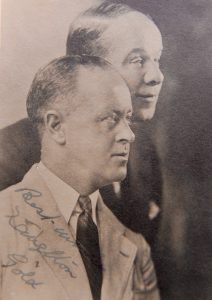
Crazy Gangsters Naughton and Gold starred in Highland Fling
HIGHLAND FLING (1936. Dir: Manning Haynes) Charlie Naughton and Jimmy Gold of The Crazy Gang play detectives searching a Scottish castle for a missing will. Criminals pretending to be ghosts are, of course, involved. Then some real ghosts enter. Reviews describe the film as extremely feeble.
HIGH SOCIETY (1932. Dir: John Rawlins) Posh comedy capers considered unworthy of its star, Variety impressionist Florence Desmond. Syd Crossley co-stars.
HOME FROM HOME (1939. Dir: Herbert Smith) Fine Sandy Powell comedy, in which he plays a man who has adapted happily to prison life, away from his nagging wife, after being unjustly convicted. He is pardoned and, protesting loudly, is released. The rest of the film is devoted to Sandy’s efforts to get back inside.
HONEYMOON FOR THREE (1935. Dir: Leo Mittler) Watchable comedy about a playboy (Stanley Lupino) who is forced to marry a French girl. Arty Ash, who sometimes did a double-act with Leslie Sarony before he teamed up with Leslie Holmes, is in the supporting cast.
HOOTS MON! (1939. Dir Roy William Neill) Max Miller and Florence Desmond play rival Variety stars booked to play the same venues in Scotland. Both artists are in excellent form.
I KILLED THE COUNT (1939. Dir: Fred Zelnik) Comedy thriller starring comedian Syd Walker as Inspector Davidson, investigating the murder of an Italian aristocrat. In 1924 Walker played cartoonist Bruce Bairnsfather’s Old Bill in Old Bill Through the Ages (why didn’t Billy Russell get the gig?). Walker’s catchphrase was the hypothetical “What would you do, chums?” – as in happening to come up behind Hitler, posterior high in the air as he bent to pick a flower. Well, what would you do, chums?
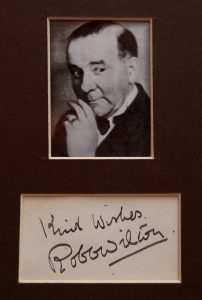
Robb Wilton dithers in The Interrupted Honeymoon
THE INTERRUPTED HONEYMOON (1936. Dir: Leslie Hiscott) Lively Claude Hulbert farce involving multiple mistaken identity issues. Attempting unsuccessfully to sort out the muddle is that great Variety comedian Robb Wilton (The Day War Broke Out).
IN TOWN TONIGHT (1934. Dir: Herbert Smith) Weak storyline for this revue-style film, but what a line-up of acts: Stanley Holloway (reciting Albert and the Lion), The Three Radio Rogues, Wilson, Keppel and Betty, The Carson Sisters, impressionist Beryl Orde, The Seven Thunderbolts and The Tiller Girls to name just a few.
I SEE ICE (1938. Dir: AQnthony Kimmins) One of George Formby’s best vehicles sees him as a photographer’s assistant who falls for ice-skater Kay Walsh. The highlight is George refereeing an ice-hockey match. Very funny.
I SPY (1933. Dir: Allan Dwan) Send-up of spy melodramas starring Ben Lyon, the Hollywood star who, with his wife Bebe Daniels, settled in England in the 1930s and had a long career on radio. Variety bill-topper Harry Tate heads the supporting cast.
IT’S A GRAND OLD WORLD (1937. Dir: Herbert Smith) Sandy Powell is on the dole, then wins £16,000 on the football pools. Amiable Powell vehicle has Gina Malo as the love interest.
IT’S IN THE AIR (1938. Dir: Anthony Kimmins) Strong George Formby entry in which he plays a would-be ARP warden who puts on a friend’s RAF uniform and, of course, gets mistaken for an airman. Much panicking in the cockpit ensues before George wins the day and the girl.
IT’S IN THE BAG (1936. Dir: William Beading) Jimmy Nervo and Teddy Knox play furniture removers who find a bag of £5 notes. When they try and spend the money by investing in a nightclub, the cash turns out to be counterfeit. Not too funny.
I’VE GOT A HORSE (1938. Dir: Herbert Smith)Sandy Powell accepts a horse as settlement for a bad debt, but when he tries it out on the racecourse it starts doing circus tricks. So hard-up Sandy and his four-legged pal join the circus for a new life together. Good vehicle for Powell.
JAIL BIRDS (1939. Dir: Oswald Mitchell)Prisoners Albert Burdon and Charles Hawtrey escape in drag and start work in a bakery in this fast-moving farce. Irish Music Hall and panto star Shaun Glenville supports, as do Nat Mills and Bobbie.
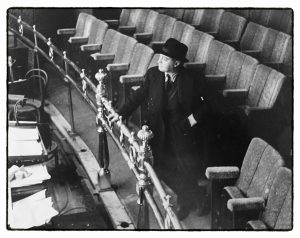
Dublin comedian Jimmy O’Dea in his beloved Theatre Royal.
JIMMY BOY (1935. Dir: John Baxter) Famous Dublin comedian Jimmy O’Dea crossed the Irish Sea to make this story about a lift-boy at a London hotel who foils a gang of spies, but by all accounts his British debut was inauspicious. Long-term collaborator Harry O’Donovan is in the cast, along with comic singer Stanley Kirkby, The Sherman Fisher Girls, The Mackey Twins and a young Irish character actor later to become very well-known: Noel Purcell.
JOSSER IN THE ARMY (1932. Dir: Norman Lee) Ernie Lotinga, former husband of Hetty King, in knockabout World War 1 farce. His character Jimmy Josser gets to impersonate a German general, of course, in time-honoured fashion.
JOSSER JOINS THE NAVY (1932. Dir: Norman Lee) More Jimmy Josser larks with Ernie Lotinga. Here he’s tracking down a mysterious villain who has stolen a secret formula.
JOSSER ON THE FARM (1934. Dir: T. Hayes Hunter) Broad comedy with Ernie Lotinga as a farmworker who takes on big business tycoon Garry Marsh, intent on buying the farm to sell to British Rail.
JOSSER ON THE RIVER (1932. Dir: Norman Lee) Ernie Lotinga and Artie Ash (who occasionally teamed up with Leslie Sarony) play photographers in this feeble Jimmy Josser entry. Cast includes Molly Lamont, Reginald Gardiner and Wallace Lupino of that ilk.
JUST FOR A SONG (1930. Dir: V. Gareth Gundrey) This musical about a boy and girl (Lilian Davis and Roy Royston) who try to find fame on the music halls has colour sequences interspersed with the (mainly) black-and-white scenes. Syd Crossley, Dick Henderson (father of Dickie), Rebla, the Mangan Tillerettes and the Mad Hatters are in it, too.
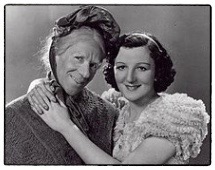
Lucan and McShane
KATHLEEN MAVOURNEEN (1937. Dir: Norman Lee) Slice of Paddywhackery about a girl (Sally O’Neil) toiling away in Liverpool to earn enough to send her little brother and sister back to the Old Country has genuine Irish stars (former Abbey player Sara Allgood) rubbing shoulders with bogus ‘Irish’ performers such as Talbot O’Farrell. Mainly notable for the first movie appearance of Arthur Lucan and Kitty McShane (one bogus, one genuine) in the days before they were billed as ‘Old Mother Riley and Her Daughter Kitty’.
KEEP FIT (1937. Dir: Anthony Kimmins, Austin Melford) George Formby enters a keep fit contest to defeat his rival (Guy Middleton) and win the girl (Kay Walsh). Boxing match at the end makes for a fine slapstick climax, and Formby is in excellent form.
KEEP SMILING (1938. Dir: Monty Banks) Famous concert pianist Peter Coke rescues Gracie Fields’ concert party in spite of dirty work by competitors. Variety performers Eddie Gray, Gus McNaughton and brother Tommy Fields support Gracie.
KEEP YOUR SEATS PLEASE (1936. Dir: Monty Banks) Yet another version of Russian farce usually known as The Thirteenth Chair, about a fortune in jewels hidden in a set of antique chairs. Supported by girlfriend Florence Desmond and almost thwarted by villain Alistair Sim, George Formby goes treasure-hunting, pausing every so often to sing When I’m Cleaning Windows and other hits.
KING OF HEARTS (1936. Dir: Oswald Mitchell) Top Scottish variety star Will Fyffe (I Belong to Glasgow, Sailing Up the Clyde, many others) was a fine character actor, too, and this sentimental tale finds him playing a docker trying to protect his daughter (Gwen Gill), who has fallen in love with a rich boy.
THE LAMBETH WALK (1939. Dir: Albert de Courville) First film version of Me and My Girl, the Cockney musical that has had an extraordinarily long life. Re-titled because of the popularity of the show’s hit song, here sung, imperishably, by Lupino Lane, playing the cocky little London geezer who inherits a castle. Wallace Lupino is in support, plus Sally Gray and Seymour Hicks.
LANCASHIRE LUCK (1937. Dir: Henry Cass) George Carney is a carpenter who wins a fortune on the football pools and decides to open a tea-shop in a posh area. Wendy Hiller plays his daughter in this comical examination of the (then) British class system.
LASSIE FROM LANCASHIRE (1938. Dir: John Paddy Carstairs)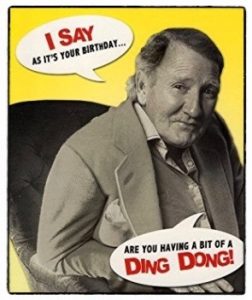 Struggling actor Marjorie Browne and father Mark Daly work in a boarding house but dream of West End fame. Variety turn Billy Caryll and Hilda Mundy are in support, plus – astonishingly – Leslie Phillips as a child. As I write (2018) Leslie is still with us, 80 years later! Ding-dong!
Struggling actor Marjorie Browne and father Mark Daly work in a boarding house but dream of West End fame. Variety turn Billy Caryll and Hilda Mundy are in support, plus – astonishingly – Leslie Phillips as a child. As I write (2018) Leslie is still with us, 80 years later! Ding-dong!
LAUGH IT OFF (1939. Dir: John Baxter) Comedian Tommy Trinder is called up when World War II breaks out and soon makes an enemy of Sgt Major Edward Lexy – eventually won over when our hero takes over the organization of the camp concert. Support includes Ida Barr, Geraldo and his Orchestra, Darville and Shires, The Three Maxwells and the Joan Davis Dancers.
LEAVE IT TO ME (1937. Dir: Herbert Smith) Policeman Sandy Powell, presumably lost as usual, rescues a girl from a bullying stepfather and for various reasons is called upon to impersonate a harem queen, a wrestler, a ballroom dancer, a Chinese mandarin and a private eye. Sounds like perhaps a little too much of a good thing.
LET’S BE FAMOUS (1939. Dir: Walter Forde) Dublin comedian Jimmy O’Dea in lively farce about an Irish villager who mistakenly thinks he has been invited to sing in a concert by the BBC. Sonnie Hale plays his friend, and love interest is provided by Lancashire variety singer Betty Driver, who was to find lasting fame decades later as ‘Hotpot Betty’ in Coronation Street.
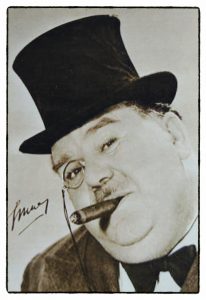
Fred Emney
LET’S MAKE A NIGHT OF IT (1937. Dir: Graham Cutts) Fine musical about a stout party (Fred Emney) who inherits a nightclub and keeps it secret from his wife. Unscrupulous waiter Charles ‘Buddy’ Rogers (Mary Pickford’s real-life husband) tries to blackmail him. Support includes Iris Hoey as Emney’s wife and variety turns Afrique, the Four Aces, Peggy and Ready, Bertha Belmore and Oliver Wakefield.
LETTING IN THE SUNSHINE (1933. Dir: Lupino Lane) Window-cleaner Albert Burdon and maid Renee Gadd track down a gang of diamond thieves in comedy that failed to win positive reviews.
LIMELIGHT (1935. Dir: Herbert Wilcox) Expensive musical vehicle for variety star Arthur Tracy, The Street Singer, that turned out to be a flop. Tilly Losch and Jack Buchanan co-star, and familiar names in the supporting cast include Ralph Reader, Queenie Leonard, W. McQueen Pope, Ronald Shiner and The Hippodrome Girls.
LITTLE DOLLY DAYDREAM (1938. Dir: Oswald Mitchell) A little girl, Binkie Stuart, runs away from the cruel aunt she lives with and helps itinerant organ-grinder Talbot O’Farrell catch a gang of thieves. Binkie is reunited with her actress mother, and O’Farrell and the tot find success as a double-act on the halls.
LONG LIVE THE KING (1933. Dir: William McGann) Vehicle for impressionist Florence Desmond, who plays a Cockney cleaner who wins a trip to a small European country, where she becomes involved with revolutionaries.
LOOKING ON THE BRIGHT SIDE (1932. Dir: Basil Deane, Graham Cutts) Gracie Fields’ first big film hit stars her as a singer who splits from, and is then reunited with, her songwriter partner. Richard-Dolman is the ebullient performer’s love interest.
LOOK UP AND LAUGH (1935. Dir: Basil Dean) Stallholders, led by Gracie Fields, figt to save their market from developers. Rowdy and action-packed musical features brother Tommy Fields and, from the variety stage, Douglas Wakefield, Harry Tate and Robb Wilton. In supporting roles are two stars of the future: Vivien Leigh and Kenneth More.
LOVE LIES (1931. Dir: Lupino Lane) Movie version of Lupino Lane’s great stage success, which featured Leslie Sarony’s immortal nonsense song I Lift Up My Finger and I Say Tweet Tweet. Dennis Hoey (who went on to play Inspector Lestrade to Basil Rathbone’s Sherlock Holmes in Hollywood) is in support, plus Dorothy Boyd and Wallace Lupino.
LOVE UP THE POLE (1936. Dir: Clifford Gulliver) Waiters Josser (Ernie Lotinga) and Spud (Jack Frost) are pursued by police while themselves tracking down a gang of jewel thieves. One reviewer wrote: ‘Too long and sloppy even for devoted Lotinga fans.’
ME AND MY PAL (1939. Dir: Thomas Bentley) Van drivers Dave Willis and George Moon are duped by criminals into thinking they are working for the police. Pat Kirkwood co-stars.
MELODY AND ROMANCE (1937. Dir: Maurice Elvey) A young London bargee (Hughie Green!) auditions for the BBC and becomes a success when he enlists the aid of his ‘gang.’ Margaret Lockwood, Joyce Cannon and Geraldine, Rex Roper and Maisie and Alistair Sim are in support.
THE MIND OF Mr REEDER (1939. Dir: Jack Raymond) Brilliant Scots variety comedian Will Fyffe once again takes on a straight part, this time as Edgar Wallace’s famous detective. Here he’s tracking down forgers, aided by Inspector Gaylor, played by Romilly Lunge (no, I’ve never heard of him either).
1940s
ASKING FOR TROUBLE (1942. Dir: Oswald Mitchell). Max Miller stars as a fishmonger jailed for illegal betting who poses as a big-game hunter (complete with live elephant) in order to help a pretty girl out of some trifling predicament. They don’t write plots like that any more.
BACK ROOM BOY (1942. Dir: Herbert Mason). Arthur Askey, this time sans Stinker, plays a BBC employee (he makes the news pips) sent to a lighthouse as punishment for various misdemeanors. Will Hay stalwarts Moore Marriott and Graham Moffatt are in attendance to help foil Nazi spies who target the lighthouse, but it’s far from Big-Hearted Arthur’s best film work.
THE BALLOON GOES UP (1942. Dir: Redd Davis). Lacklustre (by all accounts – I haven’t seen it) wartime comedy vehicle involving WAAFS and balloons for Ethel Revnell and Gracie West, ‘The Long and Short of It.’
BEES IN PARADISE (1944. Dir: Val Guest). This terrible comedy virtually ended Arthur Askey’s film career, though he did return to make a couple more in the 1950s. He and shipmates Max Bacon and Ronald Shiner play sailors shipwrecked on a tropical island occupied entirely by women. Jean Kent and Anne Shelton are among the unconvincing native girls.
BELL-BOTTOM GEORGE (1943. Dir: Marcel Varnel). Feeble George Formby outing, with our toothy hero playing a simpleton who poses as a sailor and redeems himself by capturing some spies.
THE BLACK SHEEP OF WHITEHALL (1941. Dirs: Will Hay, Basil Dearden). Nazis are mixed up in this fast-paced comedy as Will Hay, who runs a failing correspondence course, is obliged to impersonate an important scientist vital to the war effort.
BLESS ’EM ALL (1948. Dir: Robert Jordan Hill). Variety favourites Hal Monty, Jack Milroy and a very young Max Bygraves join the army together and woo ENSA girls before the fighting starts. Hal Monty was a big star in the 1940s, billed as ‘The General Forces Favourite,’ and continued to tour, and broadcast, on a rather lower level through the 1950s. There was also Bob Monty, billed as ‘Hal’s Twin Brother,’ who often appeared with him.
BOB’S YOUR UNCLE (1941. Dir: Oswald Mitchell). Unambitious Home Guard comedy starring fine North Country comedian Albert Modley.
THE BUTLER’S DILEMMA (1943. Dir: Leslie Hiscock). Acrobat and comedian Richard Hearne, later to find fame as TV’s Mr Pastry, has to pose as a butler at his fiancee’s home.
CARDBOARD CAVALIER (1948. Dir: Walter Forde). Comedy set in 1658 with one Sidcup Buttermeadow (Sid Field) agreeing to take a letter to a Royalist leader as part of a plot against Oliver Cromwell. On the way he encounters Nell Gwynne (Margaret Lockwood). One of the handful of movies made by influential Variety comedian Field, who was regarded by old school pros as ‘the comedian’s comedian’ and who died young. His stage straight man, Jerry Desmonde, is also on hand here. Not Field’s best (that’s London Town), but still worth seeing for his presence.
CHAMPAGNE CHARLIE (1944. Dir: Alberto Cavalcanti). This is a wonderful film, readily available through Amazon and highly recommended. It tells an early Music Hall story of the not-so-friendly rivalry between real-life performers George Leybourne (Tommy Trinder) and The Great Vance (Stanley Holloway). Great period detail, with Trinder and Holloway both excellent.
1950s
AFTER THE BALL (1957. Dir: Compton Bennett). The life of male impersonator Vesta Tilley, from her impoverished beginnings in the 1860s to her retirement in 1920, written by Hubert Gregg and starring his wife Pat Kirkwood. Laurence Harvey co-stars as Tilley’s husband, Walter de Frece. This now seems to be a ‘lost’ film, though I remember seeing it on television as a child. I thought it insipid then and I’d like to re-evaluate it now.
DAVY (1957. Dir: Michael Relph). Starring vehicle for Harry Secombe, who stars as Davy Morgan, who abandons his hopes for a career in opera to stay in his family’s Variety knockabout comedy act. Pretty good backstage comedy-drama, with Secombe funny and touching, and fine support from Susan Shaw, Adele Leigh, Bill Owen, Joan Sims, Clarkson Rose and Kenneth Connor.
1960s
1970s
1980s
1990s
HEAR MY SONG (1991. Dir: Peter Chelsom). Hugely entertaining comedy drama very loosely based on an episode in the life of Josef Locke, who reputedly travelled to from his home in Ireland to England incognito to do some gigs while the Inland Revenue were hot on his trail for tax evasion. There’s a lovely warm Variety sheen to this movie and Ned Beatty is excellent as Jo Locke (miming to Vernon Midgeley’s singing). Adrian Dunbar also stars, along with Tara Fitzgerald and David McCallum as Locke’s CID nemesis. Here’s the movie’s climax – note the aged pit orchestra conductor, played by veteran comedian Harold ‘Blimey, what a geezer!’ Berens.
1900-1920
THE DAN LENO PROJECT. Below is a quite extraordinary piece of film, just one minute long, of Dan Leno playing with his family at a picnic. It was created from an old fairground penny-in-the-slot ‘What the Butler Saw’ flicker-card machine. Although a Music Hall rather than Variety star (he died in 1904) Leno influenced Chaplin and Laurel, and through those who in turn copied them, aspects of his style live on to this day.
THE RATS (1900). Stars of the day lark around in impromptu scenes. With Dan Leno, Herbert Campbell, Joe Elvin, Will Evans, George Robey and Harry Randall.
BURLESQUE ATTACK ON A SETTLER’S CABIN (1900). Sketch with Leno, Campbell and Elvin.
DAN LENO’S ATTEMPT TO MASTER THE CYCLE (1900). Self-explanatory.
BURLESQUE FOX HUNT (1900). Another sketch with Leno and Campbell.
DAN LENO’S CRICKET MATCH (1900).
CHINESE MAGIC (1900). A Chinese conjurer turns a girl into a butterfly and himself into a giant bat.
THE FLYING SCOTS (1900). Comic acrobats The Three Missouris perform their well-known act, ‘More Rosin.’
CLEVER AND COMIC CYCLE ACT (1900). Comedy cyclists Lotto, Lilo and Otto.
PHONO-BIO TABLEAUX FILMS (1900. Dir: Walter Gibbons). This innovative series had stars singing their hits, synchronized to gramophone records. As such, they were the first sound films. Vesta Tilley sings The Midnight Son, Algy the Piccadilly Johnny and Louisiana Lou; Lil Hawthorne Kitty Mahone; Alec Hurley (husband of Marie Lloyd) The Lambeth Walk; The American Four Sally in Our Alley; and G.H. Chirgwin The Blind Boy.
THE LLOYD BROTHERS DOUBLE ROPE ACT (1901). Acrobats play violins while balancing.
CANNON BALL JUGGLING (1901). Famous strongman and juggler Paul Cinquevalli does his act.
DAN LENO’S DAY OUT (1901). Leno playing around on a cricket pitch again.
DAN LENO, MUSICAL DIRECTOR (1901). The great comic conducts the Metropolitan Police Band as they play Harry Bedford’s great song A Little Bit of the Top.
MADEMOISELLE ROSIE AQUINALDO (1901). Young Australian contortionist.
ACROBATIC PERFORMANCE – SELLS AND YOUNG (1901). Boneless lady Emilie Sells and clown Fritz Young.
THE ADRIAN TROUPE OF CYCLISTS (1901). Another famous cycling act of its day.
IRENE LATOUR, CONTORTIONIST (1901). Irene and her little dog, Zaza.
1920s
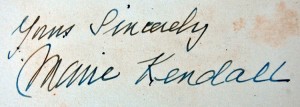
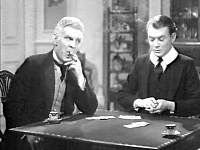

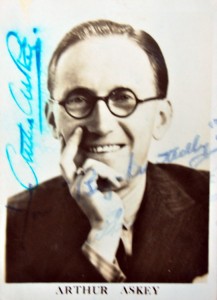
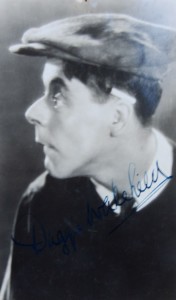
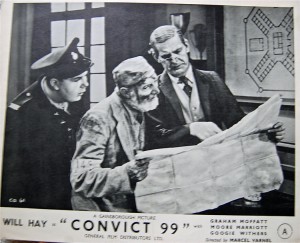
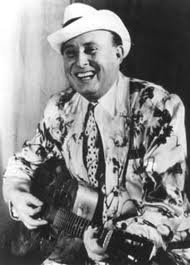
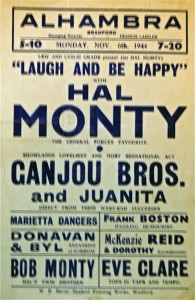
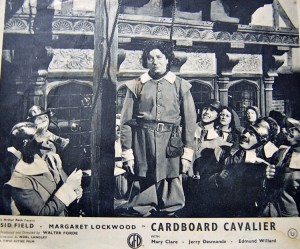
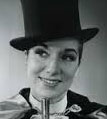
stephendee
| #
Doesn’t ring a bell with me, Stefan, tho it’s a very typical Sarony line. Anyone? Stephen
stefan Beard
| #
Just been reading the Leslie Sarony piece. Absolutely fantastic. Well done. A question if you don’t mind. Does anyone know the the title of the Leslie Sarony song that has the line “Oi ! how you gettin’ on? ” in it ?
ruskimic
| #
I do hope you can help me. I have been searching for many years for my Great Uncle Mr Albert Edward Rayner who went under the name of Dan Rayner. I believe he worked the Music Halls but I do know for sure he worked with Fred Karno. When Charlie Chaplin left Fred in America over a Pay dispute the American backers of the tour insisted that my Great Uncle Dan Rayner be called over from England to take Charlie Chaplin’s Place. It appears Dan was liked more at that time in America than Charlie was. Another man in the troupe at that time was Stan Laurel. When the show folded Dan was asked along with Stan to stay in America. As we know Stan stayed and found he fame and fortune. Dan however chose to return to England. He was last that I can find in a play Dick Wittington at the Empire Theatre advertised in the a local paper in Durham in 1948. Unfortunately I have not been able to find when or where he died. I am hoping that maybe on your search you came across some info on Dan Rayner. I live in Australia so am unable to search all the death records for England with out it costing me a fortune. So any help you maybe able to give me would be really appreciated. I know he went to America twice and once to Australia and also once to South Africa. I do know he was married to a lady named Barbara Robinson and they had a son Conrad Paul Rayner but I have been unable to find any thing out about these two members of his family. I do know they separated before 1935 and he lived with another lady named Phyliss but as to her last name I have no idea. I have been searching for nearly 10 yrs now and I don’t think there is any thing left on the net that can help me. You it would appear maybe my last chance. I will keep my fingers crossed that you did come across some info on him or you know some one that maybe able to help. He went to America in 1913 on the Lusitania and it shows at this time he is married. He then returns to America in 1914 on the ship Adriatic. I do believe he also did a radio show after 1935 for quite some time but do not know the name of that show. I do hope you can help in my search for my Great Uncle.
I also might add my great grandfather was Edwin Richard Barwick. He was also a Music Hall performer and appeared in the first Royal Command Performance. If you get the picture and Index to that even you will see him standing next to Pavlova. I would love to hear any information you may have found out about him. I do believe he was one of the first members of the charity named water rats, I know star was spelt back wards to get the rats part. Edwin did a lot of work for this charity in his day. What I would love to know is if there is any recording of Edwin Performing and if so how I would go about getting a copy or seeing any recording. I do have a photo copy of an old theatre bill with my grandfathers name boldly written on it. Again any help would be appreciated.
All the best and I look forward to hearing back from you in the near future
Kim Rayner
my email address is ruskimic@yahoo.com.au